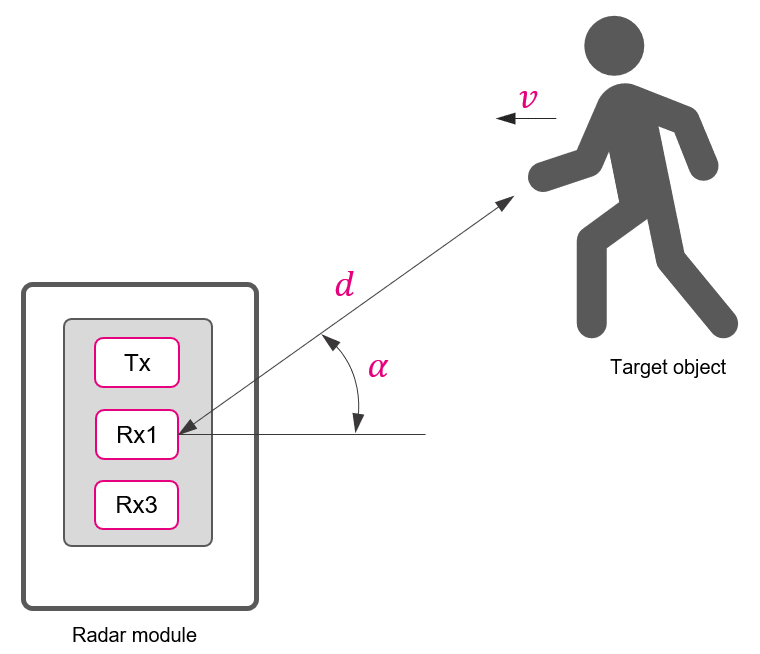The BGT60TR13C radar sensor is a compact module and contains a powerful system that can detect presence, track movement, and determine the position of objects. And it does all this without the need for a camera.
At the heart of this radar are one transmitting antenna (Tx) and three receiving antennas (Rx). The transmitter sends out electromagnetic waves that bounce off objects and return the information back to the receiver. But how does the radar know where an object is or how fast it is moving? This is where signal processing comes into play.
The Chirp: Radar's signature sound
The BGT60TR13C operates in frequency-modulated continuous wave (FMCW) mode. In this mode, the radar emits a signal whose frequency increases linearly over time. This signal is called a "chirp." Imagine a musical note that rises in pitch.
Multiple chirps form a frame, which is a defined time window during which the radar collects data. The time between chirps is known as the chirp repetition time (Tc).
Mixing signals to reveal motion
When a transmitted chirp hits an object and reflects back, the radar uses a mixer to compare the original signal with the reflected one. This creates an intermediate frequency (IF) signal that reveals the differences between the two signals. These differences are key to determining motion parameters.
Extracting Motion Parameters
The radar can extract three essential pieces of information from this processed signal:
Range (d): The distance between the radar and the object, calculated from the time delay between the transmitted and received signals.
Velocity (v): The speed of the object, derived from changes across multiple chirps in a frame.
Angle (α): The object's direction relative to the radar, determined by the phase difference between signals received by multiple Rx antennas.



